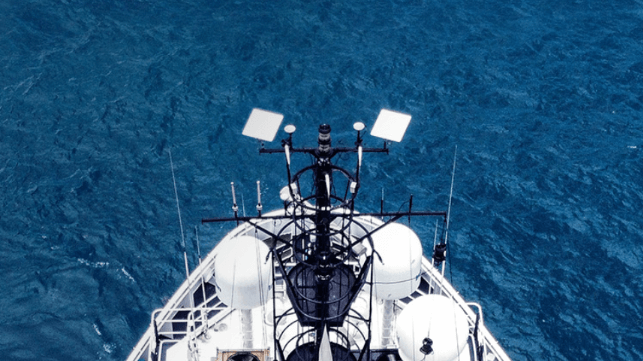Two New (And Very Different) Maritime Satcom Services Launch

Two new classes of maritime satcom service emerged on the market on Thursday, a sign of the rapid pace of change in the market. They occupy very different parts of the spectrum: KVH has released the first service that integrates satellite, 5G and Wi-Fi in a single "hybrid" package, and - in a separate and unrelated development - Starlink has launched the long-anticipated maritime version of its LEO broadband service.
KVH launches hybrid network
KVH has rolled out the world's first satellite, cellular, and Wi-Fi "hybrid" network service with one single terminal on board. The service includes KVH's satellite coverage on the Intelsat network with speeds of up to 20 mbps, plus integrated 5G/LTE cellular service in 150 countries. The terminal has an integrated Wi-Fi bridge for extra cost savings and speed when alongside the pier.
Some vessel operators and service providers have worked out their own hybrid VSAT / 5G solutions before, but this is the first service and hardware package to integrate all three, with a single invoice.
"Today, we are introducing a new standard for integration, convenience, speed, and affordability for commercial seafarers and leisure boaters worldwide," said Brent Bruun, KVH’s President and CEO. "Together, KVH ONE and the groundbreaking TracNet H-series terminals are the first to offer a fully integrated hybrid maritime solution of this type."
Starlink launches LEO broadband
On Thursday, LEO satellite operator Starlink launched a much different kind of service. The Elon Musk-owned satcom provider is known best for defense applications in contested environments, but its primary ambitions are in the civilian realm. The company wants to capture a wide swath of the global broadband data market, from home users up to strategic missile-defense systems. To date, its marketing has aimed at rural, remote and underserved shoreside users, but it is now turning seaward.
This week, the company rolled out its long-anticipated service for the maritime market. Its 2,200 on-orbit satellites have been providing connectivity for terrestrial customers for some time, but marine satcom has some of the most challenging conditions available: few places to put ground stations, harsh weather conditions, and an installation surface that won't hold still.
The company is coming to market with a flat-panel ESA terminal and an advertised bandwidth of up to 350 mbps - several times faster than the average home cable installation. For comparison, three popular VSAT providers market speeds of up to 100 mbps, 175 mbps and 60 mbps respectively (though much higher bandwidth is available for high-demand customers like cruise lines).

that matters most
Get the latest maritime news delivered to your inbox daily.
Starlink also advertises its lower latency (time delay), which is driven by its satellites' low orbit. For shoreside users, the system's tested latency is about 40 milliseconds, much longer than cable internet but very short for VSAT. Traditional geostationary satellites are far higher in orbit, and they typically have a time delay of up to 600 ms due to the extra distance.
Starlink's service is not a solution for deepsea voyages, at least just yet. The coverage area for the rollout period is restricted to near-coastal areas of the U.S., Canada, Europe, the Med, Australia, Chile and Argentina, according to a chart the firm released. In Q4, it will expand to include the mid-latitudes, followed by equatorial and high-latitude waters in Q1 2023.
